Ever had a brilliant product idea but felt stuck, unsure if anyone would actually buy it? You’re not alone. Many aspiring entrepreneurs believe that product research is a complex and expensive process reserved for big companies with huge budgets.
The good news is that’s no longer true.
Today, anyone with an internet connection can uncover really powerful market insights using affordable and even free tools. This guide will show you how.
How to use Ahrefs for finding trends
First, use your favorite AI model to brainstorm keywords related to your product idea.
Say, the product idea is “QuietHub” – a portable, noise-dampening desk divider for remote workers (I just made that up). Your prompt could look something like this:
“Give me a comma-separated list of informational search keywords related to the problems faced by remote workers trying to focus in noisy or shared workspaces. Avoid brand names or overly specific phrases. Keep the keywords broad enough to reflect common user intent and search behavior.”
Next, plug the keywords into Ahrefs’ Keywords Explorer.
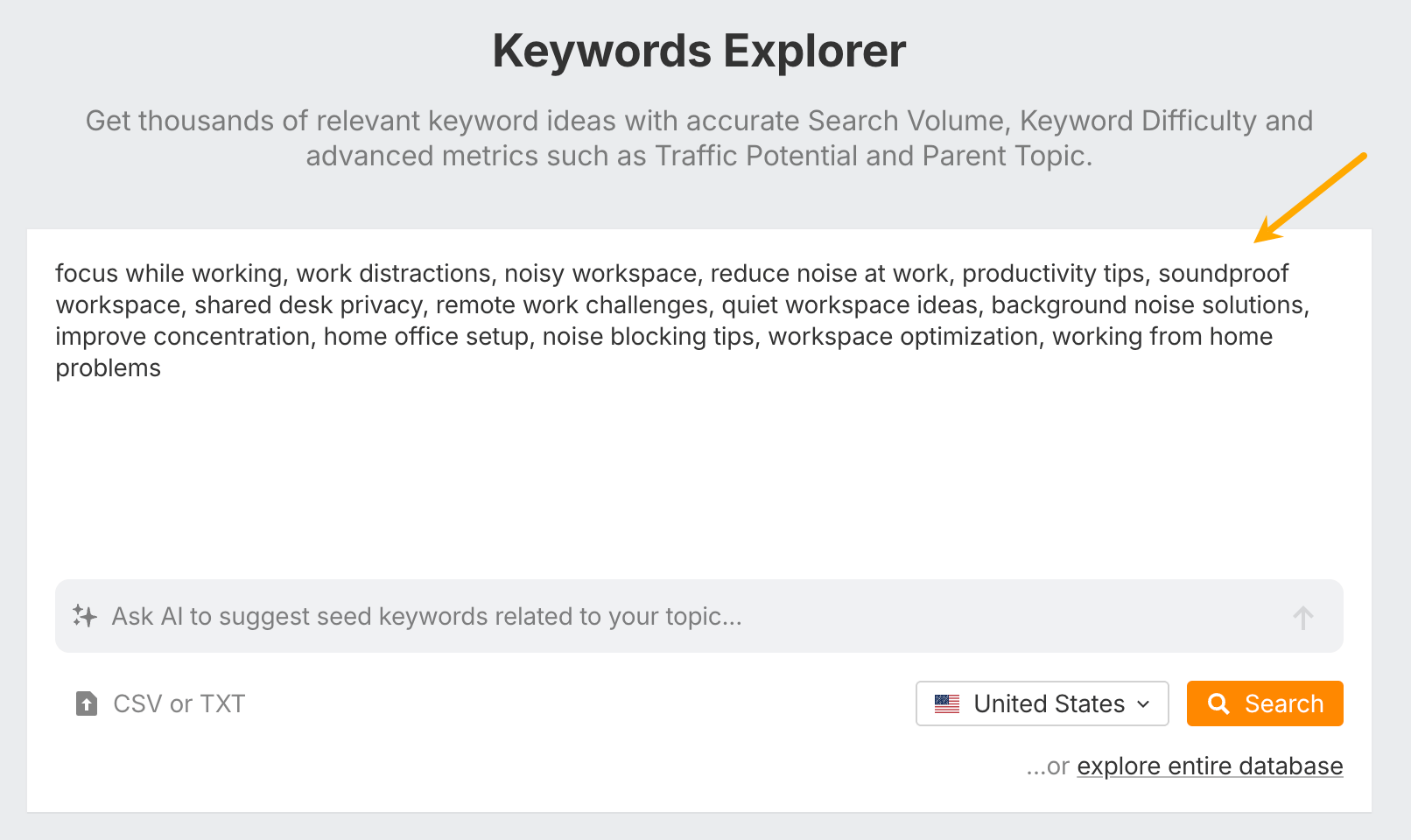
Hit “Search” and go to the “Matching terms” report to see related search queries.
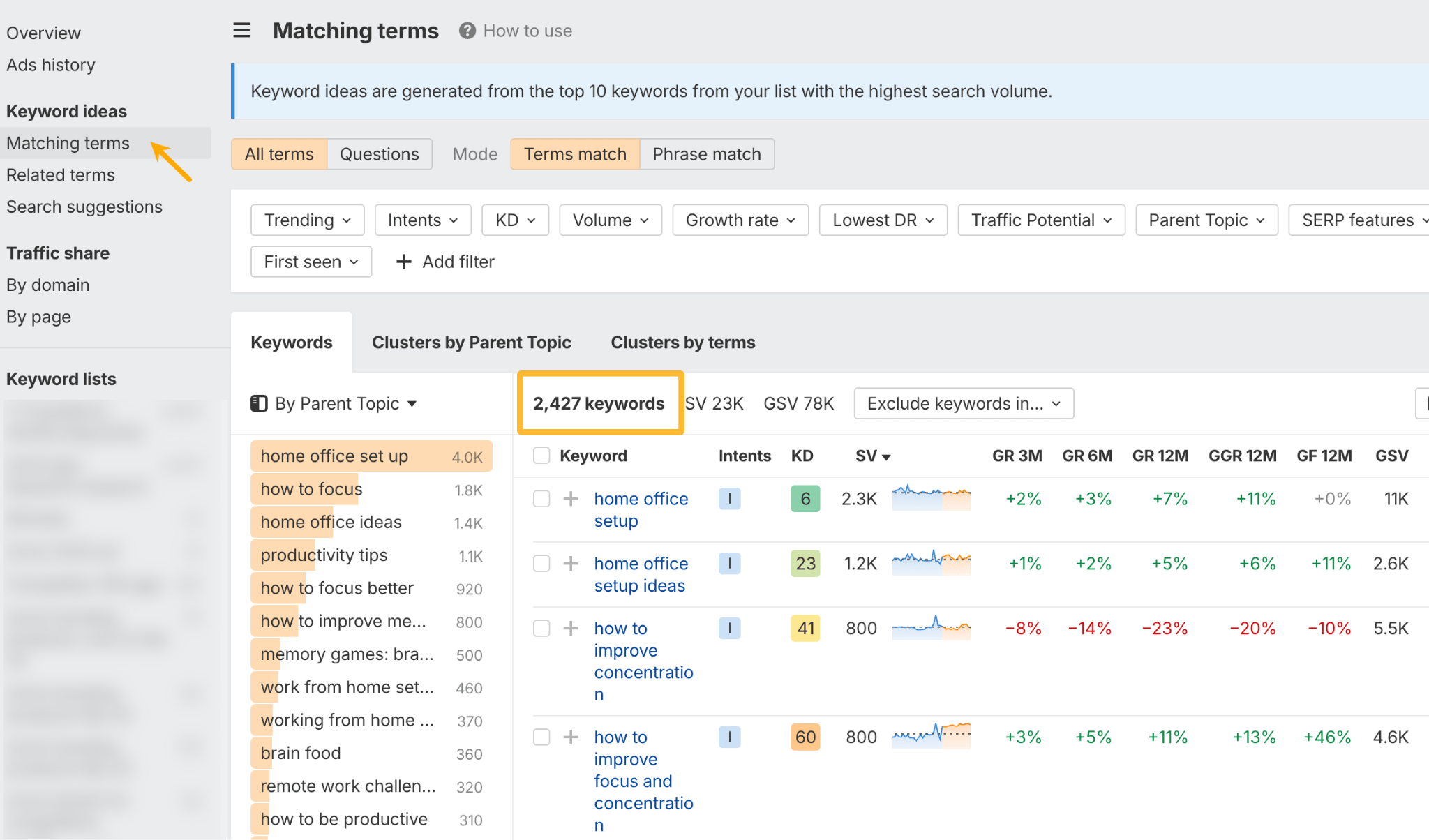
Most of the keywords you’ll see here include a search volume graph and a forecast (the orange part). Use them to spot trends, like whether demand for your product is growing, if it’s seasonal, and what the outlook looks like based on past data.
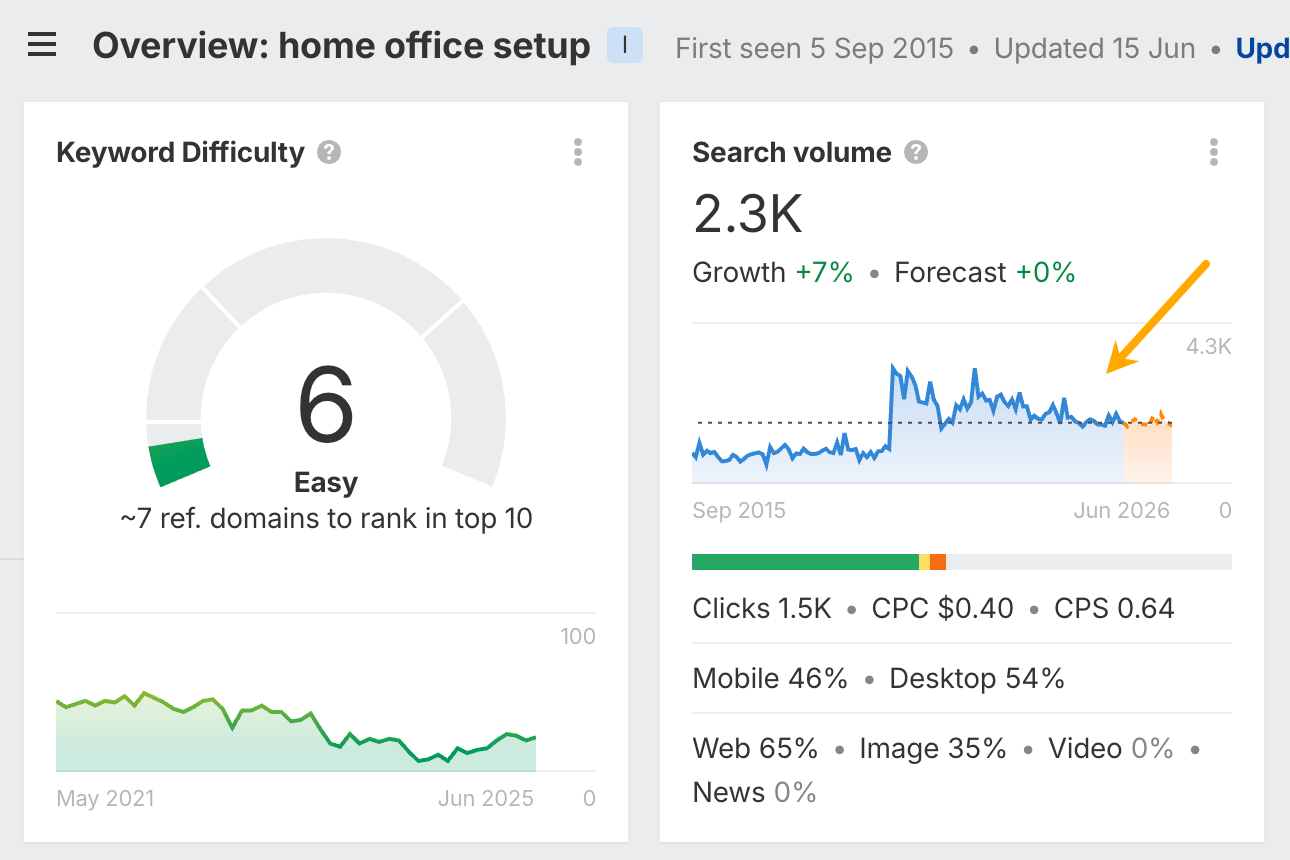
Free alternative: Google Trends lets you see if interest in a topic is growing or shrinking over time.
How to find trending products on Amazon
If you’re doing product research to find trending products to sell online on marketplaces like Amazon, Ahrefs can help with that, too.
Start by running a blank search in the Keywords Explorer.
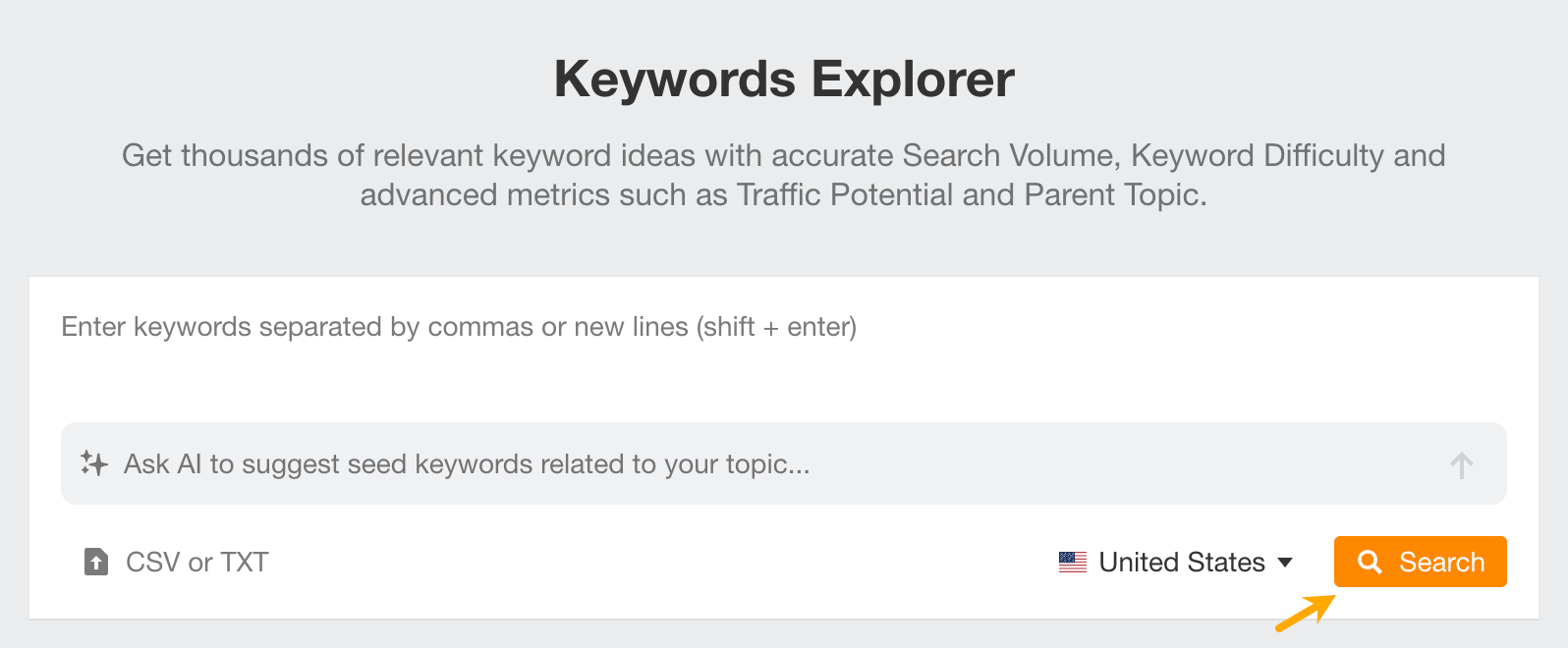
Then, enable the Ecommerce filter you can find in Presets, and set the target to “amazon.com ranks in top 10”.

Finally, sort the keywords by growth rate—over the past 3, 6, or 12 months—depending on how new the product is or how long the trend has been around.
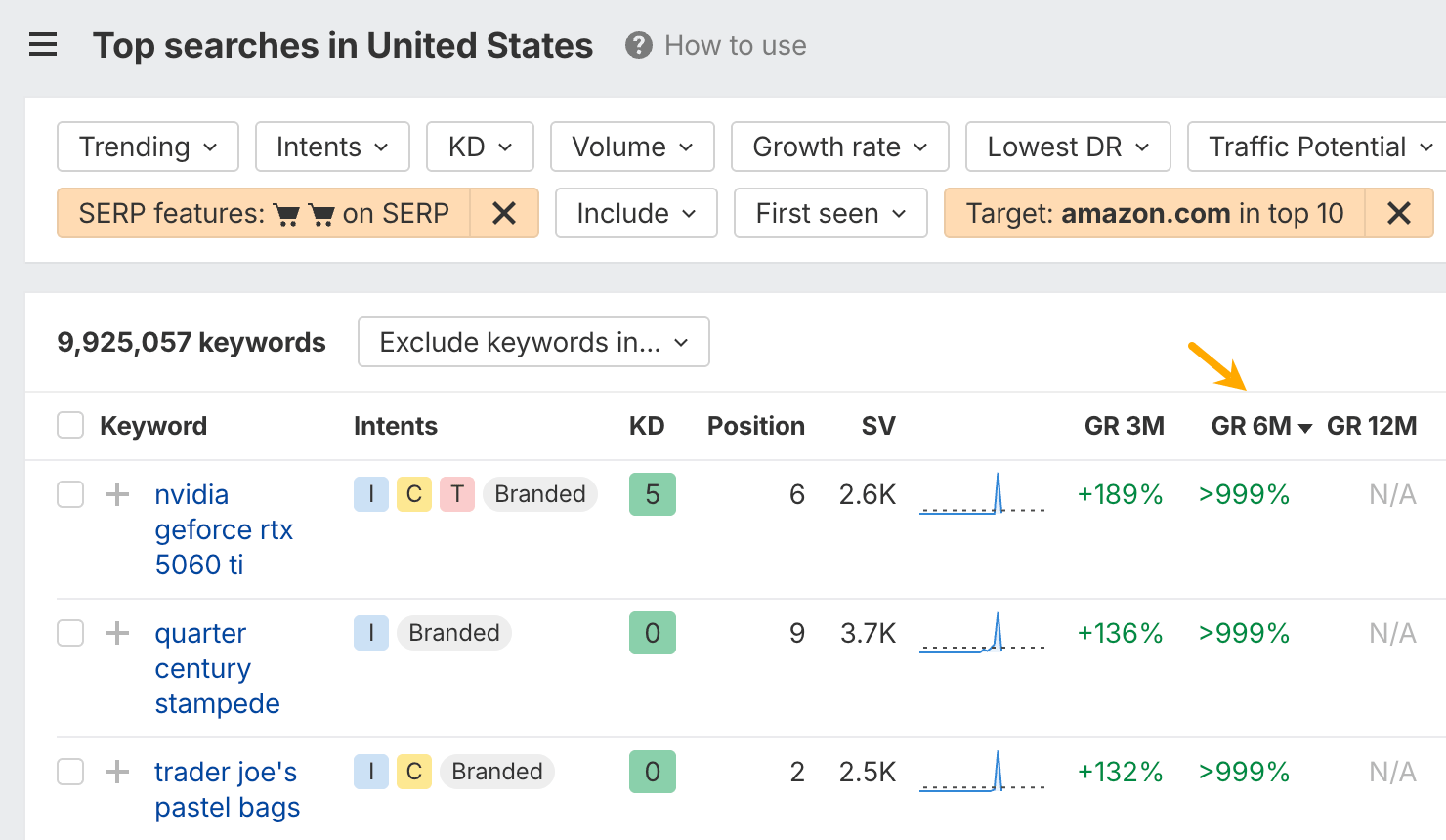
You can further refine results with the Trending filter.
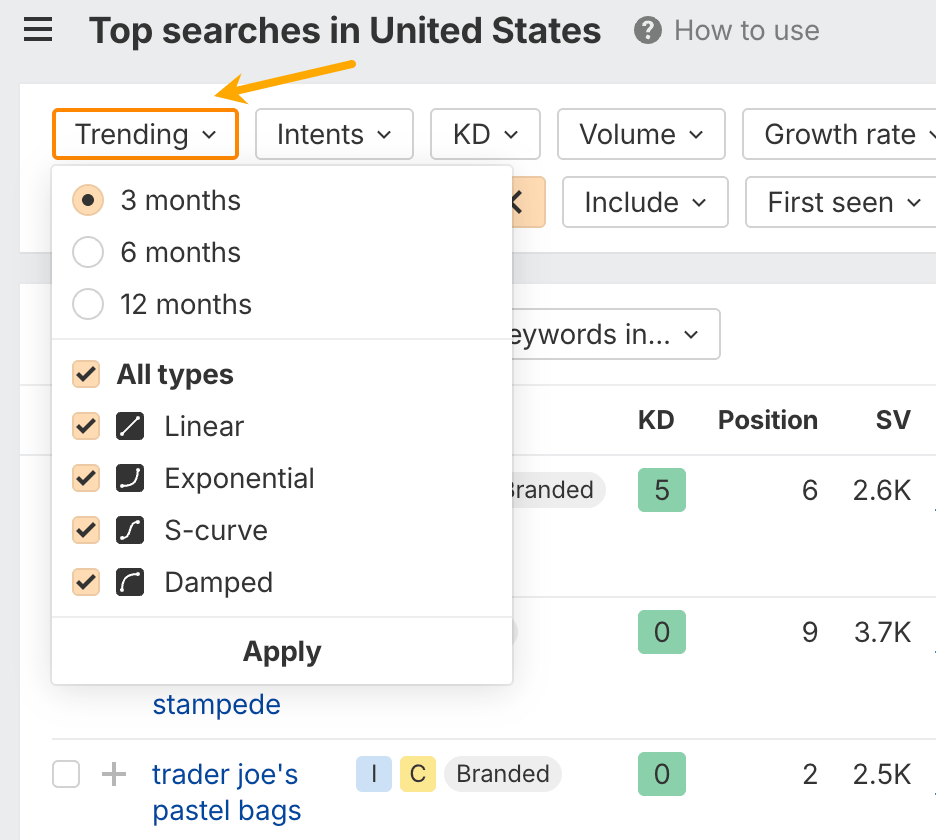
- Linear growth: Demand increases steadily over time at a consistent rate.
- Exponential growth: Demand starts off slow but then surges rapidly.
- S-curve growth: Demand builds gradually, takes off quickly, then levels out as the market saturates.
- Damped growth: Demand spikes early but quickly loses momentum and flattens.
Which problems are screaming for a solution?
Look for organic keywords with strong volume and up to 30 Keyword Difficulty (KD). These are pain points lots of people have, yet few sites solve them well.
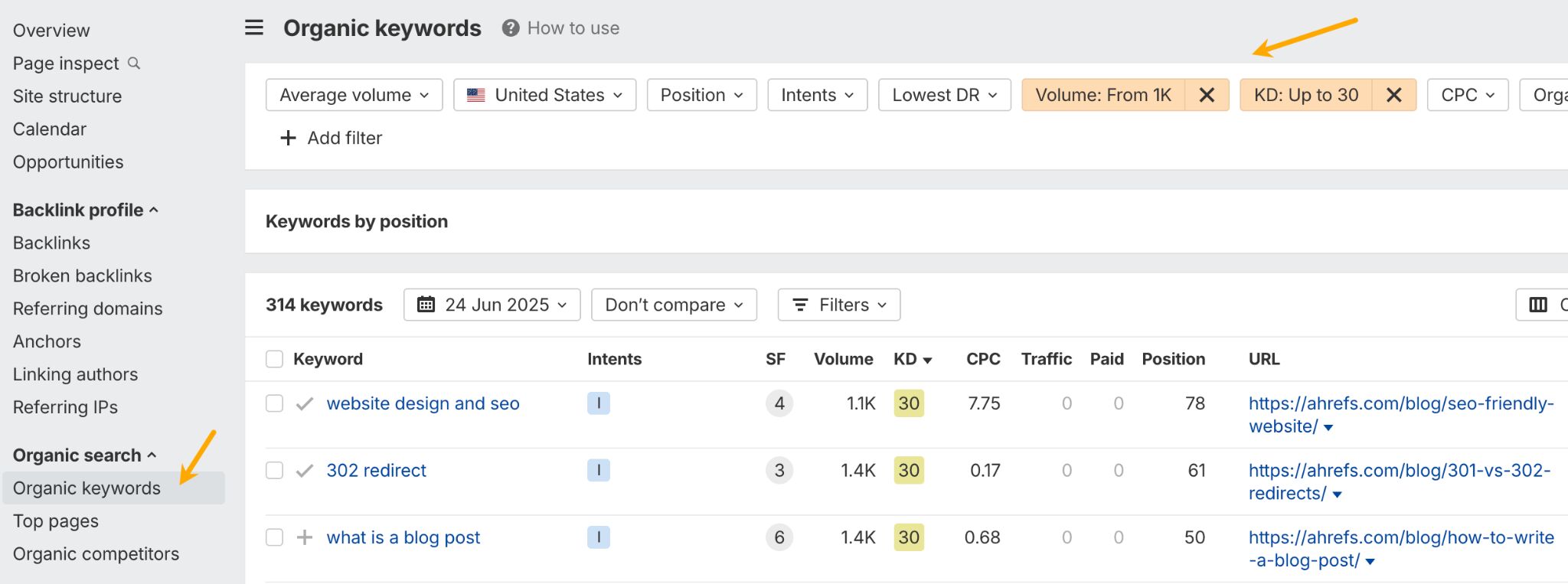
Where is real money already exchanging hands?
Sort your competitors’ paid keywords by descending CPC and set the Paid position filter to “Improved, no change”. A high CPC signals buyers are willing to pay; consistent ad spend means it converts (click on the position history button to see the bidding timeline).
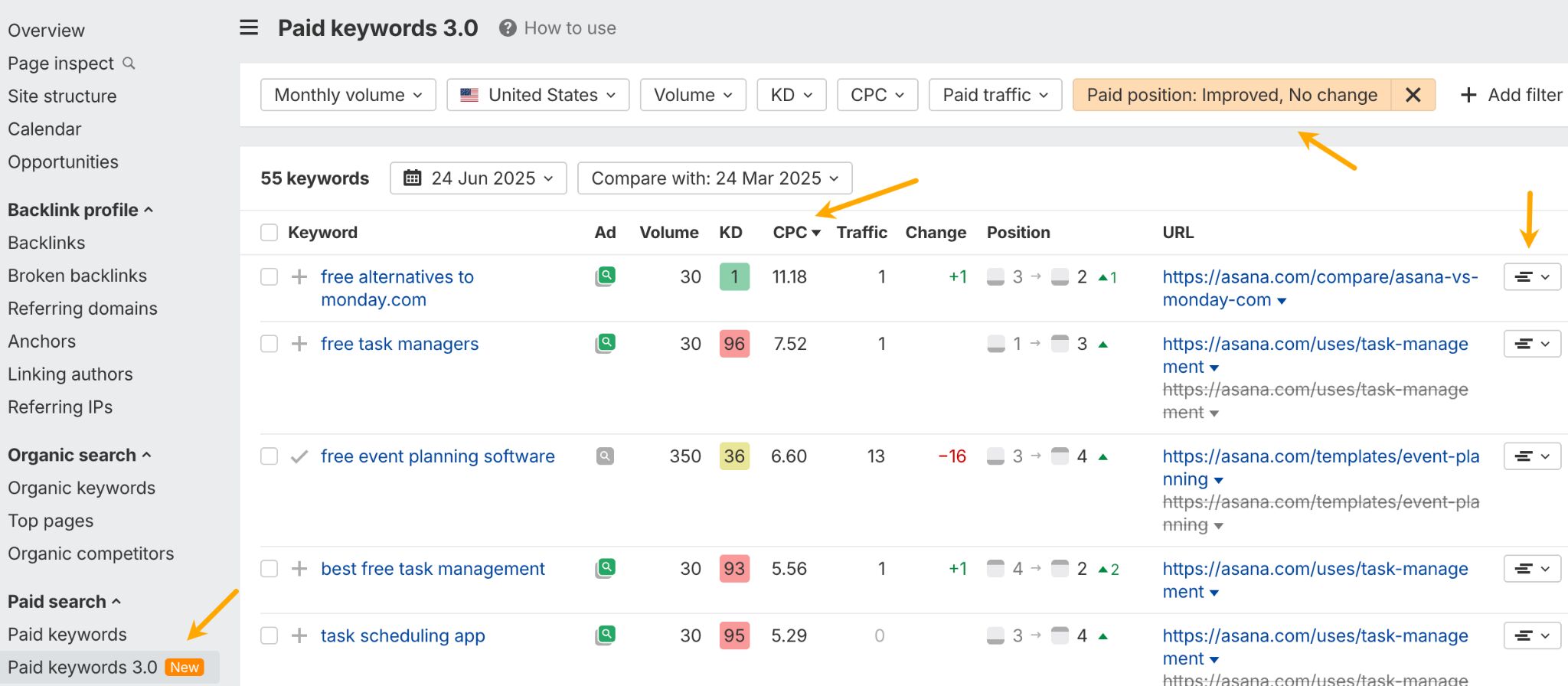
What features do competitors double-down on?
Scroll down to the bottom of the Overview report to find keywords that a rival both ranks top-10 and keeps bidding on. That overlap could reveal mission-critical features or use-cases.
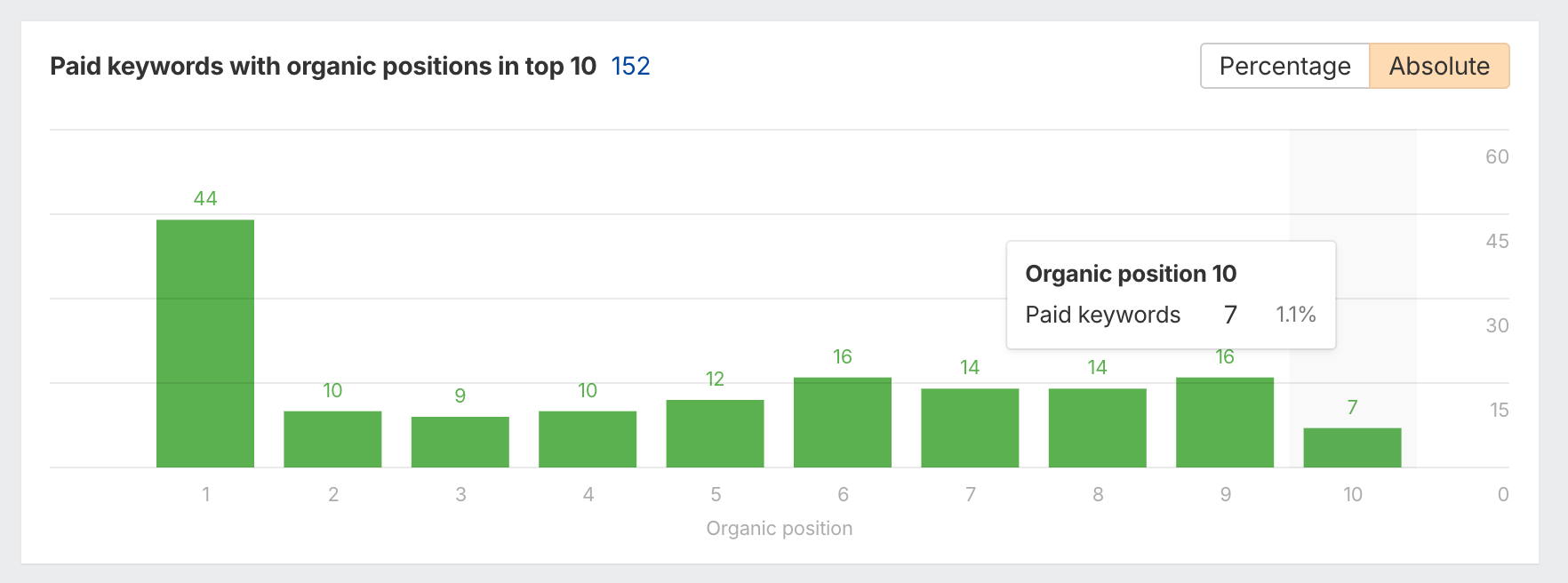
How should we message at launch?
Scan ad copy and top-ranking page titles. Note phrases that recur (e.g., “no-code,” “AI-powered,” “lifetime access”).
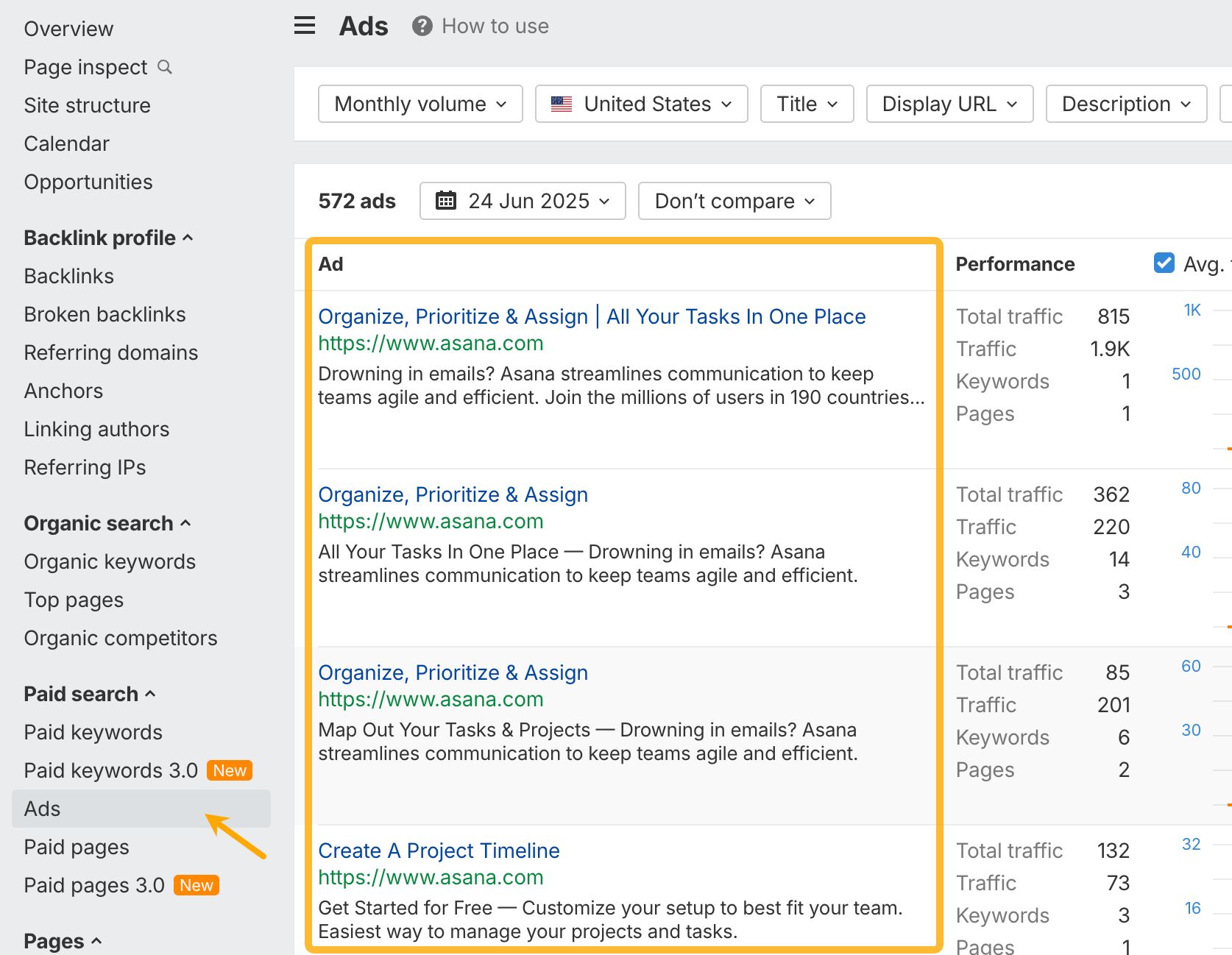
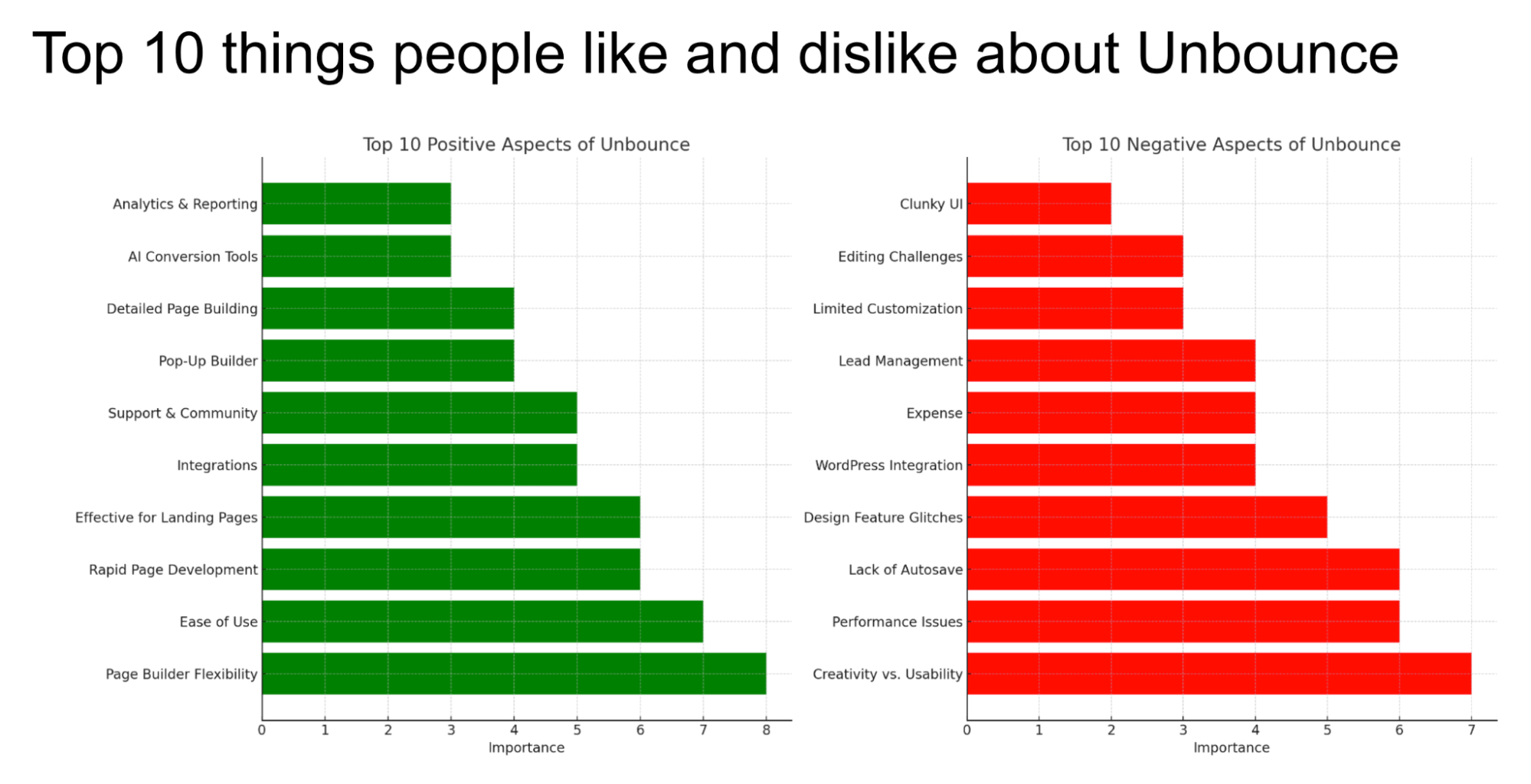
Prompt idea: “I’ve pasted 50 customer reviews for [Competitor’s Product] below. Summarize the most common complaints and the most frequently praised features.”
Create instant customer personas
After a few interviews, you can turn your notes into a clear persona. Then use it as a “sparring partner” to polish your product idea. Here’s a quick example ChatGPT just made for me.
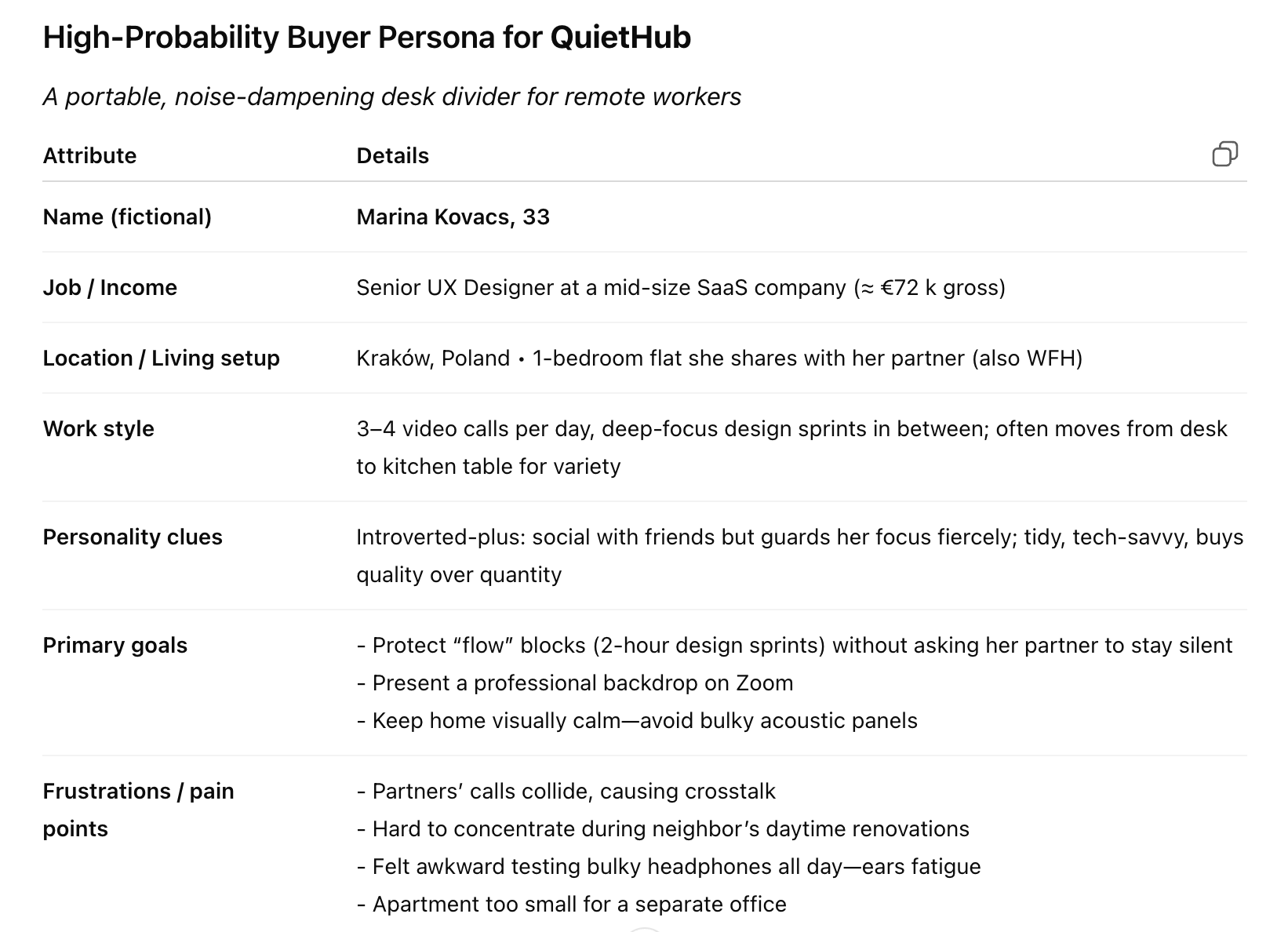
Prompt idea: “Based on the following interview notes, create a detailed buyer persona. Include their goals, frustrations, and motivations.”
Draft surveys and interview questions
Overcome writer’s block by having the AI create your research materials.
Prompt idea: “I’m building a project management tool for freelance graphic designers. Generate 10 open-ended interview questions I can ask them to understand their biggest challenges.”
Create product prototypes
Turning a text prompt into a believable product image in seconds lets you vet ideas before any money leaves the bank.
You can show a realistic mock-up to teammates, potential customers, or suppliers, gather concrete feedback instead of guesses, and iterate on the look, size, or materials the same afternoon.
If I were to gather feedback on the QuietHub idea, I’d definitely share what ChatGPT came up with.


Similar Posts
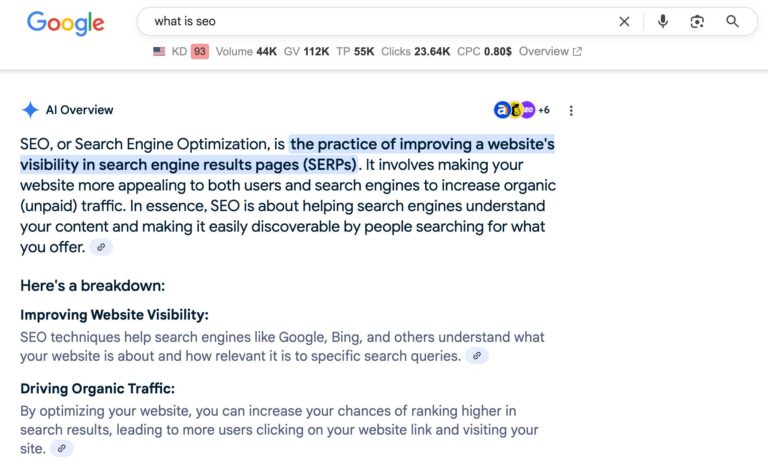
Is SEO Dead? Real Data vs. Internet Hysteria
Has AI and social media killed SEO in 2025? Not even close. Here’s the thing: on one side, we’ve got how people feel about SEO these days—the doom-and-gloom headlines, the panic about zero-click searches, the fear that AI has made everything obsolete. But on the other hand, the data tells a totally different story. The data…

How Much Does an SSL Certificate Cost in 2025? Your Comprehensive Guide to Prices
So, what’s the price of an SSL certificate in 2025? Our handy guide to prices and what you get for your money has you covered. Table of Contents So, you’ve finally decided to get an SSL certificate to make sure your website is secure and gives your visitors confidence. But how much does an SSL…
Explore Our New Courses, Guides, and Tutorial Navigation
We’ve completed a major overhaul in how our tutorials are organized on Drupalize.Me. Take a look at the new Guides page and find something to new to learn about Drupal. Drupalize.Me has an interesting content problem. We have nearly 1,000 tutorials for folks who want to learn new skills in Drupal. Our tutorials cover a…

Should You Use a Hyphen in a Domain Name? Advantages and Disadvantages of URL Dashes
Can a hyphen in a domain name affect SEO? No. But should you use dashes in URLs? Depends. Find out all you need to know. So, you’ve picked the perfect business name only to find the matching domain isn’t available. Cue the never-ending ‘hyphen in domain name’ debate. Whether or not you should put a…

I Asked 20+ Marketers for the Best Marketing Newsletters. Here’s 10 They Recommended
There are hundreds of marketing newsletters competing for your attention. Maybe thousands. So I did something different: I asked the speakers and panelists at Ahrefs Evolve, our conference in San Diego from October 13-15, which newsletters they actually read and recommend. The result? A curated list of newsletters that span SEO, media, tech, leadership, and…
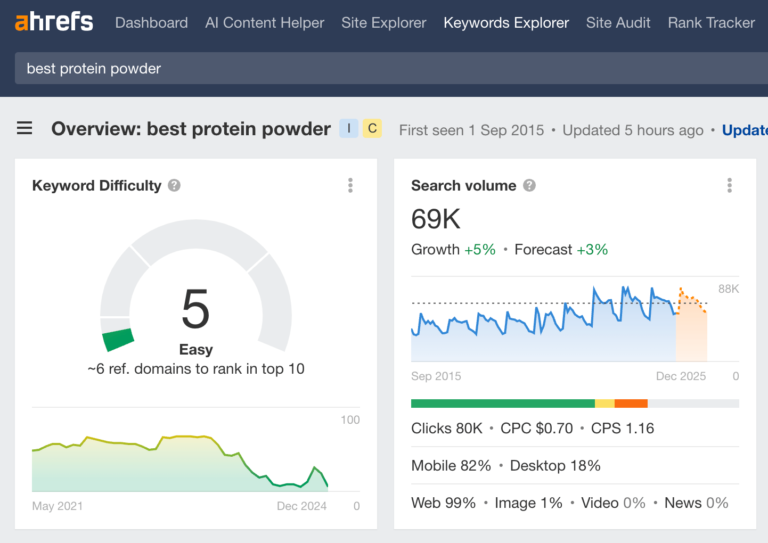
Why I Wouldn’t Start Affiliate Marketing in 2025 (And What I’d Do Instead)
Back in the day, I ran a couple of semi-successful affiliate websites. I even once ranked #1 for “best protein powder.” This was a pretty lucrative keyword given its commercial intent and high search volume. Ever since then, the idea of starting another affiliate site and getting serious about it has always been in the…
